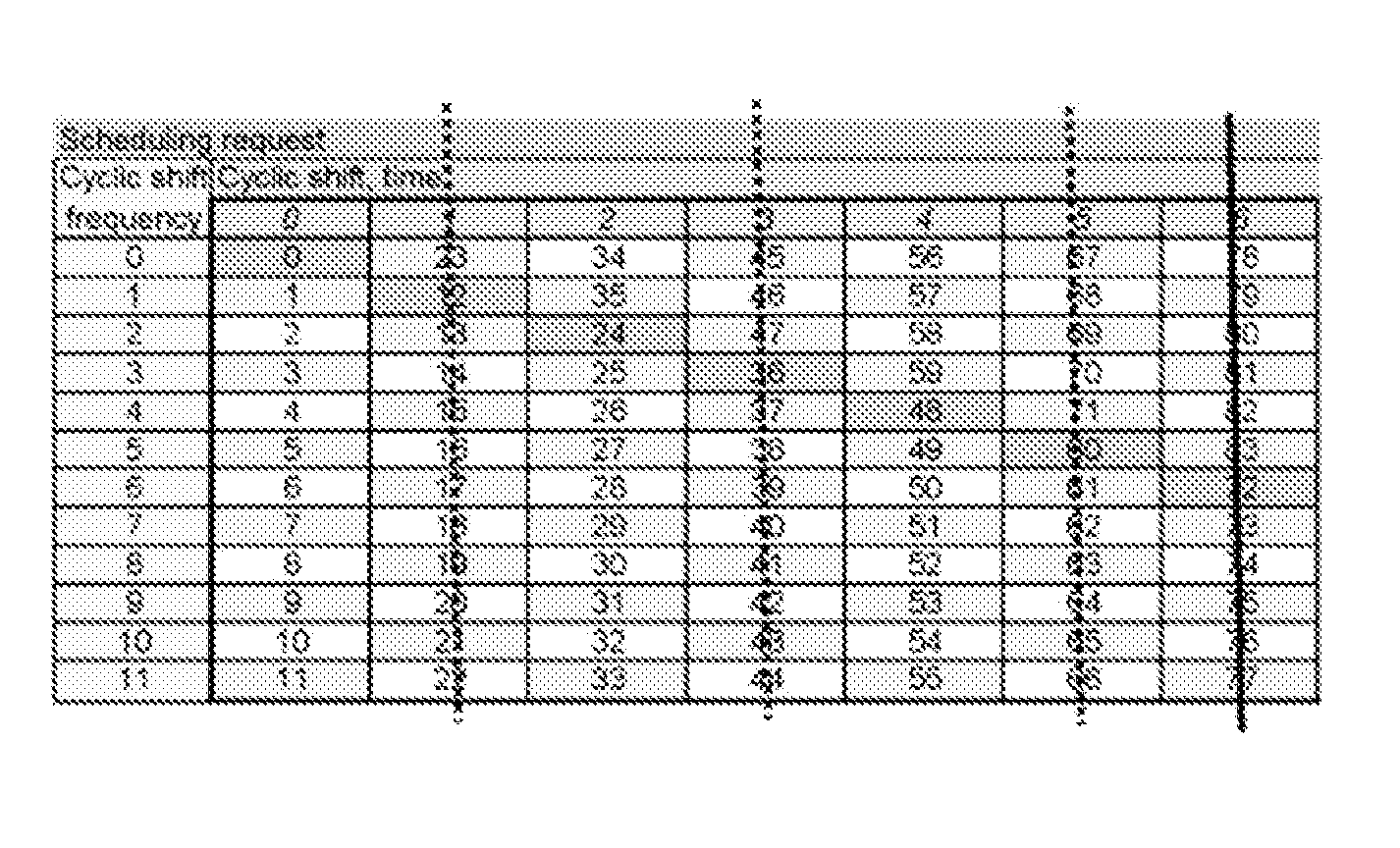Scheduling request transmission supporting high doppler
a request transmission and high-doppler technology, applied in the field of mobile communications, can solve the problems of difficult (or even impossible) to provide sufficient performance for 360 km/h, and affecting the performance of high-doppler, so as to reduce multiplexing capacity and simplify sequence signaling and processing.
- Summary
- Abstract
- Description
- Claims
- Application Information
AI Technical Summary
Benefits of technology
Problems solved by technology
Method used
Image
Examples
Embodiment Construction
[0054]Reference will now be made in detail to the preferred embodiments of the present invention, examples of which are illustrated in the accompanying drawings, wherein like reference numerals refer to like elements throughout.
[0055]According to the teachings of a first embodiment hereof, a method is shown for arranging block level spreading in such a way that the actual SF in the block domain is constrained to be an even number N (i.e., 6) even though there are N+1 symbols in the original spreading sequence (e.g., 7). In the proposed scheme, the block spreading is performed using a spreading sequence of length N.[0056]Extended sequence of length N+1 blocks is obtained by repetition of a pre-defined block out of N spread blocks[0057]An outcome of this arrangement is that partial orthogonality which is a property of even-length spreading sequence can be provided for odd number of blocks.
[0058]It is noted that orthogonal multiplexing over N+1 symbols has been achieved without degradi...
PUM
 Login to View More
Login to View More Abstract
Description
Claims
Application Information
 Login to View More
Login to View More - R&D
- Intellectual Property
- Life Sciences
- Materials
- Tech Scout
- Unparalleled Data Quality
- Higher Quality Content
- 60% Fewer Hallucinations
Browse by: Latest US Patents, China's latest patents, Technical Efficacy Thesaurus, Application Domain, Technology Topic, Popular Technical Reports.
© 2025 PatSnap. All rights reserved.Legal|Privacy policy|Modern Slavery Act Transparency Statement|Sitemap|About US| Contact US: help@patsnap.com



